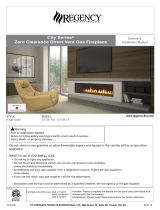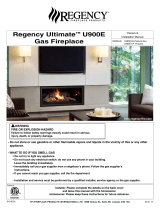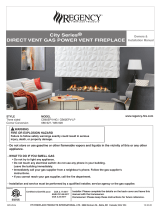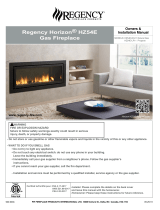
H E AT WAV E
™
2W: www.streamline.systems E: sales@streamline.systems T: +44 (0)1626 830 830 W: www.streamline.systems E: sales@streamline.systems T: +44 (0)1626 830 830 3
Your HEATWAVE™ includes three kits - fuel line kit, exhaust kit and air intake kit. Before commencing installation,
identify these kits, making sure that all the components have been included. Special care must be taken with the
connections found with the fuel pump.
When positioning the HEATWAVE™, all due precautions must be taken to minimize all risk of bodily injury, as
well as damage to the vehicle.
• Position the HEATWAVE™ where there is sucient clearance beneath the vehicle in order to fit the
air intake and exhaust hoses, avoiding components which could be adversely aected by the heat of
the exhaust hose. e.g. Fuel tank, plastic parts under body protection, etc.
• Remove the front cover of the cabinet carefully, in order to avoid damaging the attaching wires.
• Drill two holes in the vehicle floor, large enough for the air intake and exhaust hoses, (Approx 30mm
in diameter) and place the heater cabinet above these holes.
• Drill four 8mm holes, corresponding with the fixing holes, in each corner of the cabinet and secure
the cabinet to the floor of the vehicle, using spreader washers underneath if necessary.
• Secure the air intake hose to the appropriate spigot on the heater and the black air intake filter to the end
of the hose, securing it underneath the vehicle, with the hose clip supplied. The air intake must be located
so that it cannot become clogged with dirt. The air intake must not point in the direction of travel, must
be protected from splashing water and must be above the fording line of the vehicle. Ensure adequate
distance from the exhaust system.
• Attach the fuel line to the appropriate spigot on the heater, using the connecting hoses and clamps
supplied. Route the fuel line through the floor, protecting it from sharp edges, suciently away from the
exhaust pipe and run it to the integration point, securing it to the vehicle where necessary. Fuel lines must
always be routed through cool areas in order to prevent the formation of bubbles due to heating up. Mount
the fuel pump underneath the vehicle, using the rubber mounting supplied, making sure that the flow
direction is correct. The tapered end of the fuel pump must point in the direction of the fuel integration
source. The pump should be within a metre of the integration point and mounted in a cool place. The
fuel integration point is dierent on each vehicle. Request the manufac-turers advice if uncertain. If an
independent fuel supply is being used, a fuel filter should be installed before the fuel pump. Only EN590
grade diesel is acceptable for this heater.
• A coil of thin wire will be found bundled inside the base of the heater cabinet. Route this wire through the
vehicle floor, protecting it from sharp edges, to the fuel pump. The wire should be secured adequately to
the vehicle to prevent sagging, avoiding the hot exhaust components.
• The HEATWAVE™ will require its own
85ah leisure battery as its source of
power. If an existing leisure battery
is already being used, connect the
suggested battery in parallels to the
existing battery and make sure that
they are being charged by the vehicles
charging system via a split charge
relay. Connect the two leads from
inside the cabinet to the 12V battery
via a 20A inline fuse. Red - positive +
Black - negative. Lengthen the leads if
necessary with the equivalent gauge
cable. The battery should be situ-ated
as close to the HEATWAVE™ as possible.
• Identify the purple wire exiting the black
box on the inside of the front cover of
the HEATWAVE™. Lengthen this wire if
necessary and connect it to the positive
terminal of the same battery. (Unless a
Frostat controller is to be fitted – see the
Frostat option.)
• See the fig 1 for wiring confirmation.
• Replace the front cover of the
HEATWAVE™, securing it with the four
screws.
• Attach the exhaust hose to the appropriate spigot on the heater and secure it underneath the vehicle. Cut
the hose to the required length if necessary. The total length of the exhaust hose must not be less than
500mm and must not exceed 1000mm. Fit the exhaust muer in line where ever convenient, ideally near
the heater. The exhaust hose must be positioned in such a way as to exclude all risk of injury or damage
due to direct contact. The exhaust hose should not point in the direction of travel and must be positioned
in such a way that exhaust gases cannot enter the vehicle via the ventilation openings. Any bends in the
exhaust hose must have a minimum radius of 50mm. The opening must not be directed towards any part
of the vehicle.
Installation Guides
Installation
Installation
Power
Air Intake
Exhaust
Connect plug to
fuel pump
Connect to battery
via 20A Fuse
Connect to Battery
Negative
Connect to positive
terminal or purple
wire from Frostat
Controller
Connect multiplugs
to Heater Unit












